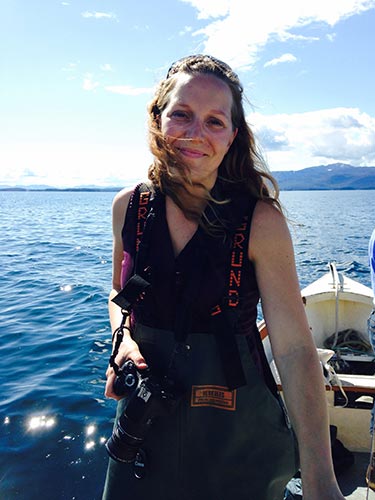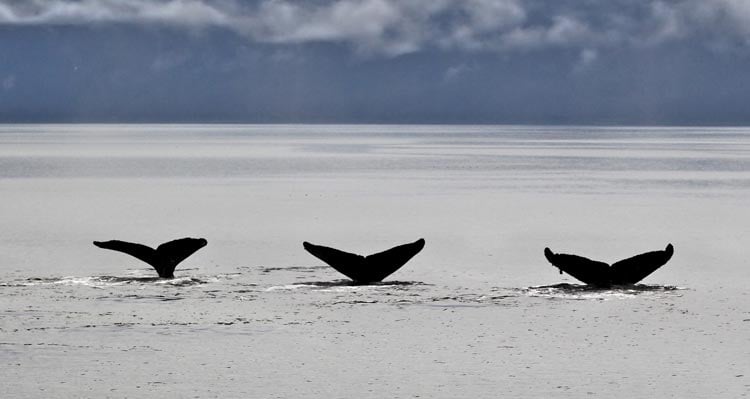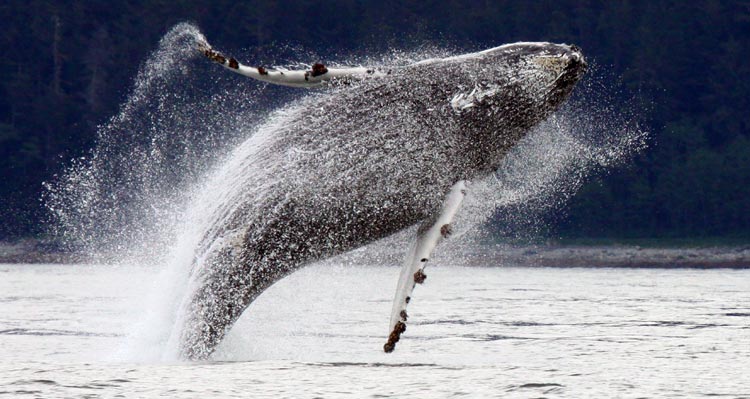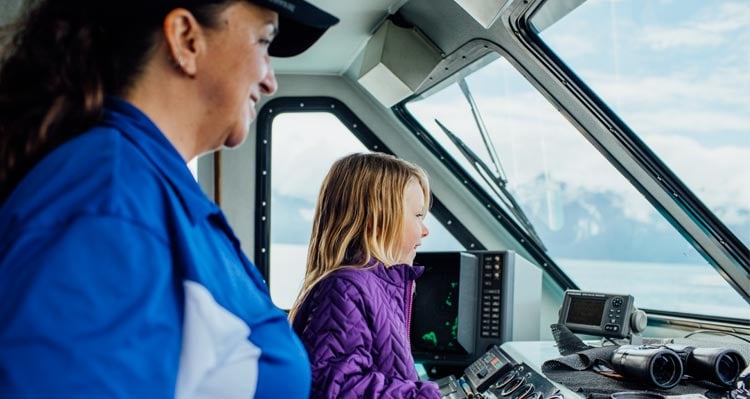Whale watching is, by definition, a passive practice. But it’s also incredibly dynamic. It’s about being present in the natural habitat of marine mammals in a respectful way.
Sustainable whale watching has always been top of mind for the team at Kenai Fjords Tours, and even more so since partnering with the Alaska Whale SENSE initiative in 2017.
“It’s an important program for us to be a part of,” says Shannon Thorn, Operations Assistant at Kenai Fjords Tours. Kenai Fjords Tours has recently received the 2019 Whale SENSE operator accreditation.
Whale SENSE is an educational program that promotes best practices in commercial whale watching. The program originally started on the Atlantic coast of the US, as a partnership between NOAA Fisheries and Whale and Dolphin Conservation. In 2015, the program came to Juneau, Alaska and in 2017 expanded to Seward, home of Kenai Fjords Tours.
“We’re helping to set a higher standard of whale watching,” says Suzie Teerlink, Marine Mammal Specialist and program coordinator for Whale SENSE in Alaska. “We work with operators to encourage going above and beyond the regulations. Not just respecting their space, but also taking the initiative to be sensitive to whale behavior.”
The expansion of the Whale SENSE program in Alaska is, quite fittingly, a slow and sustainable approach. “We want to expand in a controlled way,” says Suzie. “We’re taking on a few new companies each year, focusing on education and really trying to increase the quality of the narrative we’re sharing on the boats.
For the team at Kenai Fjords Tours, the program is a perfect fit. They jumped on board in the 2017 season when the program reached Seward for the first time.

Suzie has always been drawn to the ocean, and to the environments of marine mammals. Even after completing a PhD in Marine Biology and cataloguing over 150 whales in the Juneau area, she’s still fascinated by watching whales in their natural habitat.

“I’m still really drawn to them, and awed by them,” she says. “One of the things that I love doing the most is noticing patterns and habits of individuals. Seeing not just a whale, but that whale. It’s fascinating to try and understand their use of different areas and how it changes. They are far-moving, adaptable animals and can be in one area one day and gone the next.”
Communicating about the whereabouts of whales is an essential topic for whale watching operators, both in terms of spotting whales and ensuring their safety. Better communication, Suzie says, equals better whale watching practices. She’s found that in Seward, clear collaboration between operators has always existed and Shannon agrees. “Our captains are always talking—to each other, and to other operators,” she says.
With ongoing communication, education and collaboration, Suzie believes that the whale watching industry can continue to grow responsibly. “I think that whale watching is an incredible opportunity for a non-consumptive use of a resource. Whales are pretty adaptable. If they are less comfortable, they have the agency to move to different areas.”

Understanding the autonomy of whales is key to setting good expectations for a whale watching tour. The Kenai Fjords Tours captains have extensive interpretive knowledge and study the patterns of whales every day. But when it comes down to it, how a tour goes is up to the whales. Suzie recommends that whale watching and aspiring naturalists always keep this in mind.
“I think that it's really tempting to focus on facts,” she says. “But I would challenge naturalists to instead really focus on what we don't know about whales. Think about how we would tease apart these mysteries that make whales so fascinating to us. Much of whales’ lives are inaccessible to us and always will be—and that’s part of the magic.”

Every passenger can play a role in promoting sustainable marine wildlife watching. Enjoying a marine wildlife viewing experience while ensuring animals are safe is essential.
Here are some tips on how to be a sustainable whale watcher:
Tips Courtesy of Watchable Wildlife Inc.
We are building a team of passionate people determined to make a difference in the places we love. Every effort counts. Meet more of them here and discover how Promise to Place is the real deal.
Learn More
Insider tips, inspiration and deals — delivered straight to your inbox.